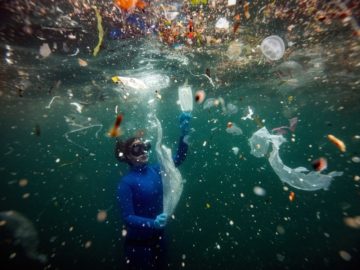Category: Recommended Reading
Cynthia Weil (1940 – 2023) Songwriter
Sunday Poem
Licking the Dew off Roses
(for Laurie Lee and his daughter Jessy)
When she woke, at six in the morning,
gurgling, he’d creep silent from his
warm bed to lay her gently on a shawl.
Always the same way round they’d walk
the garden, listening to the peonies
and poppies open. He had never heard them
stretch and squeak until he walked
with her safe in his arms, laughing,
as she leaned to lick the dew off roses.
Even now she remembers frosty mornings
wrapped in a rough blanket, his flat vowels
curling in a tobacco tang, the stubble of his chin.
Oh why did you never walk with me, Daddy,
safe in your arms, under a waxing moon,
so I too could lick the dew off roses?
by Sue Hubbard
from Everything Begins with the Skin
Enitharmon Press, London, 1994
Saturday, June 10, 2023
Nick Drake: The Life
Kitty Empire at The Guardian:
 When the cult singer-songwriter Nick Drake’s third album, Pink Moon, was released in 1972 many of his friends were horrified. Now held to be a stone-cold classic, it is a spare, beautiful sequence of songs, many of which lay bare its 24-year-old author’s inner tumult. Drake’s two previous albums, Five Leaves Left (1969) and Bryter Layter (1971), had sold poorly. Although he was an English singer-guitarist whose unconventional tunings and numinous lyrics set him apart, even in a crowded folk revival field, a chasm had opened up between the promise of his talent and his meagre public profile.
When the cult singer-songwriter Nick Drake’s third album, Pink Moon, was released in 1972 many of his friends were horrified. Now held to be a stone-cold classic, it is a spare, beautiful sequence of songs, many of which lay bare its 24-year-old author’s inner tumult. Drake’s two previous albums, Five Leaves Left (1969) and Bryter Layter (1971), had sold poorly. Although he was an English singer-guitarist whose unconventional tunings and numinous lyrics set him apart, even in a crowded folk revival field, a chasm had opened up between the promise of his talent and his meagre public profile.
Now, Drake is revered as a depressed romantic too fragile for the world. The Cure took their name from one of his songs. In the 80s, artists as diverse as Kate Bush and the Dream Academy cited him as an influence. Volkswagen used Pink Moon’s title track in an ad in 1999, prompting a fresh upsurge of interest in his oblique pastorals.
more here.
Nike Drake – Pink Moon
Science Fiction From Latin America
Emily Hart at the New York Times:
 A spaceship lands near a small town in the Amazon, leaving the local government to manage an alien invasion. Dissidents who disappeared during a military dictatorship return years later as zombies. Bodies suddenly begin to fuse upon physical contact, forcing Colombians to navigate newly dangerous salsa bars and FARC guerrillas who have merged with tropical birds.
A spaceship lands near a small town in the Amazon, leaving the local government to manage an alien invasion. Dissidents who disappeared during a military dictatorship return years later as zombies. Bodies suddenly begin to fuse upon physical contact, forcing Colombians to navigate newly dangerous salsa bars and FARC guerrillas who have merged with tropical birds.
Across Latin America, shelves labeled “ciencia ficción,” or science fiction, have long been filled with translations of H.P. Lovecraft, Ray Bradbury, William Gibson and H.G. Wells. Now they might have to compete with a new wave of Latin American writers who are making the genre their own, rerooting it in their homelands and histories. Shrugging off rolling cornfields and New York skylines, they set their stories against the dense Amazon, craggy Andean mountainscapes and unmistakably Latin American urban sprawl.
more here.
Indictment
Scientists Discover ‘Elixir of Life’ That Slows Aging
Pandora Dewan in Newsweek:
 A common nutrient found in everyday foods might be the key to a long and healthy life, according to researchers from Columbia University. The nutrient in question is taurine, a naturally occurring amino acid with a range of essential roles around the body. Not only does the concentration of this nutrient in our bodies decrease as we age, but supplementation can increase lifespan by up to 12 percent in different species. Our main dietary sources of taurine are animal proteins, such as meat, fish and dairy, although it can also be found in some seaweeds and artificially supplemented energy drinks. It can also be produced inside the body from other amino acids. In a study published in the journal Science, a team of researchers from around the world looked at the effects of this nutrient on health and lifespan. “This study suggests that taurine could be an elixir of life within us that helps us live longer and healthier lives,” Vijay Yadav, one of the leading authors of the study, said in a statement.
A common nutrient found in everyday foods might be the key to a long and healthy life, according to researchers from Columbia University. The nutrient in question is taurine, a naturally occurring amino acid with a range of essential roles around the body. Not only does the concentration of this nutrient in our bodies decrease as we age, but supplementation can increase lifespan by up to 12 percent in different species. Our main dietary sources of taurine are animal proteins, such as meat, fish and dairy, although it can also be found in some seaweeds and artificially supplemented energy drinks. It can also be produced inside the body from other amino acids. In a study published in the journal Science, a team of researchers from around the world looked at the effects of this nutrient on health and lifespan. “This study suggests that taurine could be an elixir of life within us that helps us live longer and healthier lives,” Vijay Yadav, one of the leading authors of the study, said in a statement.
Yadav, assistant professor of genetics and development at Columbia University Vagelos College of Physicians and Surgeons, first discovered the importance of taurine while researching osteoporosis, uncovering the nutrient’s essential role in regulating bone growth. Similar studies have also shown that taurine can benefit immune function, obesity and the nervous system. “We realized that if taurine is regulating all these processes that decline with age, maybe taurine levels in the bloodstream affect overall health and lifespan,” Yadav said.
More here. (Note: Congratulations to Dr. Abdullah Ali from my lab, a co-author on this Science article)
The View from Inside Beatlemania
Jill Lepore in The New Yorker:
 On November 4, 1963, the Beatles played at the Prince of Wales Theatre, in London, exuberant, exhausted, and defiant. “For our last number, I’d like to ask your help,” John Lennon cried out to the crowd. “Would the people in the cheaper seats clap your hands? And the rest of you, if you’d just rattle your jewelry.” Two weeks later, the band made their first appearance on American television, on NBC’s “Huntley-Brinkley Report.” “The hottest musical group in Great Britain today is the Beatles,” the reporter Edwin Newman said. “That’s not a collection of insects but a quartet of young men with pudding-bowl haircuts.” And, four days after that, “CBS Morning News with Mike Wallace” broadcast a four-minute report from “Beatleland,” by the London correspondent Alexander Kendrick. “The Beatles are said by sociologists to have a deeper meaning,” Kendrick reported. “Some say they are the authentic voice of the proletariat.” Everyone searched for that deeper meaning. The Beatles found it hard to take the search seriously.
On November 4, 1963, the Beatles played at the Prince of Wales Theatre, in London, exuberant, exhausted, and defiant. “For our last number, I’d like to ask your help,” John Lennon cried out to the crowd. “Would the people in the cheaper seats clap your hands? And the rest of you, if you’d just rattle your jewelry.” Two weeks later, the band made their first appearance on American television, on NBC’s “Huntley-Brinkley Report.” “The hottest musical group in Great Britain today is the Beatles,” the reporter Edwin Newman said. “That’s not a collection of insects but a quartet of young men with pudding-bowl haircuts.” And, four days after that, “CBS Morning News with Mike Wallace” broadcast a four-minute report from “Beatleland,” by the London correspondent Alexander Kendrick. “The Beatles are said by sociologists to have a deeper meaning,” Kendrick reported. “Some say they are the authentic voice of the proletariat.” Everyone searched for that deeper meaning. The Beatles found it hard to take the search seriously.
“What has occurred to you as to why you’ve succeeded?” Kendrick asked Paul McCartney.
“Oh, I dunno,” he answered. “The haircuts?”
More here.
Saturday Poem
For Mohammed Zeid of Gaza, Age 15
There is no stray bullet, sirs.
No bullet like a worried cat
crouching under a bush,
no half-hairless puppy bullet
dodging midnight streets.
The bullet could not be a pecan
plunking the tin roof,
not hardly, no fluff of pollen
on October’s breath,
no humble pebble at our feet.
So don’t gentle it, please.
We live among stray thoughts,
tasks abandoned midstream.
Our fickle hearts are fat
with stray devotions, we feel at home
among bits and pieces,
all the wandering ways of words.
But this bullet had no innocence, did not
wish anyone well, you can’t tell us otherwise
by naming it mildly, this bullet was never the friend
of life, should not be granted immunity
by soft saying—friendly fire, straying death-eye,
why have we given the wrong weight to what we do?
Mohammed, Mohammed, deserves the truth.
This bullet had no secret happy hopes,
it was not singing to itself with eyes closed
under the bridge.
Friday, June 9, 2023
Homo naledi Burial & Cave Etchings
We Have Never Been Disenchanted
Eugene McCarraher at The Hedgehog Review:
 [W]ith the victories of science, technology, and capitalism, we discovered that the cosmos of enchantment was unreal, or at best, utterly unverifiable; we cast most of the spirits into oblivion, and made room for their withered but venerable survivors in our chambers of private belief. Among the North Atlantic intelligentsia, at least, this story in some form is so widely hegemonic that even religious intellectuals accept it. For instance, in A Secular Age (2007), Charles Taylor—a practicing Catholic—affirms, albeit in his own peculiar way, the consensus of “disenchantment.” In the pre-modern epoch of enchantment, Taylor explains, the boundary that separated our world from the sacred was porous and indistinct; traffic between the two spheres was frequent, if not always desired or friendly. “Disenchantment” began with the church’s rationalization of doctrine and the growing awareness that Christianity was not the world’s only religion. Now, having left the enchanted universe behind, we disenchanted dwell within the moral and ontological parameters of an “immanent frame”: the world as apprehended through reason and science, bereft of immaterial and unquantifiable forces, structured by the immutable laws of nature and the contingent traditions of human societies.
[W]ith the victories of science, technology, and capitalism, we discovered that the cosmos of enchantment was unreal, or at best, utterly unverifiable; we cast most of the spirits into oblivion, and made room for their withered but venerable survivors in our chambers of private belief. Among the North Atlantic intelligentsia, at least, this story in some form is so widely hegemonic that even religious intellectuals accept it. For instance, in A Secular Age (2007), Charles Taylor—a practicing Catholic—affirms, albeit in his own peculiar way, the consensus of “disenchantment.” In the pre-modern epoch of enchantment, Taylor explains, the boundary that separated our world from the sacred was porous and indistinct; traffic between the two spheres was frequent, if not always desired or friendly. “Disenchantment” began with the church’s rationalization of doctrine and the growing awareness that Christianity was not the world’s only religion. Now, having left the enchanted universe behind, we disenchanted dwell within the moral and ontological parameters of an “immanent frame”: the world as apprehended through reason and science, bereft of immaterial and unquantifiable forces, structured by the immutable laws of nature and the contingent traditions of human societies.
more here.
Hugh Kenner and the Origin of the Work of Art
Walter Benn Michaels at nonsite:
 Borges famously singles out for praise Menard’s description of “truth’ whose mother is history, rival of time, depository of deeds, witness of the past …” (CF, 94). A rejected draft might have said something like this: “truth, whose father is history,” “preserver of time ….” Then “father” and “preserver” crossed out and replaced with “mother” and “rival,” the point of the revision being to express Menard’s thought better and also to make sure the text in which he expressed it coincided (“word for word and line for line”) with what Cervantes had written. Of course, it’s hardly likely that in expressing his own thoughts he would find himself doing so in Cervantes’s words, but that’s the problem that infinite time (like the monkeys and the typewriters or being “immortal” [CF, 91]) is supposed to solve. However, the idea that he could, in revising, check to see how he was doing is a deeper problem. You wouldn’t know that truth whose father is history was wrong unless you checked, but if you checked and then corrected, you’d be copying. So, you could never check. But if you didn’t know what the original said, how could you understand yourself to be trying to reproduce it? The difficulty of Menard’s project, in other words, is not exactly how hard it is to succeed in producing even a few sentences that coincide with rather than copy Cervantes but how hard it is even to try, how hard it is even to know what trying is.
Borges famously singles out for praise Menard’s description of “truth’ whose mother is history, rival of time, depository of deeds, witness of the past …” (CF, 94). A rejected draft might have said something like this: “truth, whose father is history,” “preserver of time ….” Then “father” and “preserver” crossed out and replaced with “mother” and “rival,” the point of the revision being to express Menard’s thought better and also to make sure the text in which he expressed it coincided (“word for word and line for line”) with what Cervantes had written. Of course, it’s hardly likely that in expressing his own thoughts he would find himself doing so in Cervantes’s words, but that’s the problem that infinite time (like the monkeys and the typewriters or being “immortal” [CF, 91]) is supposed to solve. However, the idea that he could, in revising, check to see how he was doing is a deeper problem. You wouldn’t know that truth whose father is history was wrong unless you checked, but if you checked and then corrected, you’d be copying. So, you could never check. But if you didn’t know what the original said, how could you understand yourself to be trying to reproduce it? The difficulty of Menard’s project, in other words, is not exactly how hard it is to succeed in producing even a few sentences that coincide with rather than copy Cervantes but how hard it is even to try, how hard it is even to know what trying is.
more here.
Misreading Ulysses
Sally Rooney in The Paris Review:
 In 1923, the year after James Joyce’s novel Ulysses was first published in its complete form, T. S. Eliot wrote: “I hold this book to be the most important expression which the present age has found; it is a book to which we are all indebted, and from which none of us can escape.” Although Ulysses was not yet widely available at the time—its initial print runs were minuscule and it would be banned repeatedly by censorship boards—Eliot was writing in defense of a novel already broadly disparaged as immoral, obscene, formless, and chaotic. His friend Virginia Woolf had described it in her diary as “an illiterate, underbred book … the book of a self-taught working man, & we all know how distressing they are.” In comparison, Eliot’s praise is triumphal. “A book to which we are all indebted, and from which none of us can escape.” And yet this proposed relationship between Ulysses and its readers may not seem altogether inviting either. Do we really want to read a novel in order to experience the sensation of inescapable debt? In the century since its publication, Ulysses has of course become a monument not only of modernist literature but of the novel itself. But it’s also a notoriously “difficult” book. Among all English-language novels, there may be no greater gulf between how much a work is celebrated and discussed, and how seldom it is actually read.
In 1923, the year after James Joyce’s novel Ulysses was first published in its complete form, T. S. Eliot wrote: “I hold this book to be the most important expression which the present age has found; it is a book to which we are all indebted, and from which none of us can escape.” Although Ulysses was not yet widely available at the time—its initial print runs were minuscule and it would be banned repeatedly by censorship boards—Eliot was writing in defense of a novel already broadly disparaged as immoral, obscene, formless, and chaotic. His friend Virginia Woolf had described it in her diary as “an illiterate, underbred book … the book of a self-taught working man, & we all know how distressing they are.” In comparison, Eliot’s praise is triumphal. “A book to which we are all indebted, and from which none of us can escape.” And yet this proposed relationship between Ulysses and its readers may not seem altogether inviting either. Do we really want to read a novel in order to experience the sensation of inescapable debt? In the century since its publication, Ulysses has of course become a monument not only of modernist literature but of the novel itself. But it’s also a notoriously “difficult” book. Among all English-language novels, there may be no greater gulf between how much a work is celebrated and discussed, and how seldom it is actually read.
More here.
How your brain stays focused on conversations in a noisy room
Jason Arunn Murugesu in New Scientist:
 We now have a good explanation for how our brain keeps track of a conversation while we are in a loud, crowded room, a discovery that could improve hearing aids.
We now have a good explanation for how our brain keeps track of a conversation while we are in a loud, crowded room, a discovery that could improve hearing aids.
The general idea for speech perception is that only the voice of the person you are paying attention to gets processed by the brain, says Vinay Raghavan at Columbia University in New York. “But my issue with that idea is that when someone shouts in a crowded place, we don’t ignore it because we’re focused on the person we’re talking to, we still pick it up.”
To better understand how we process multiple voices, Raghavan and his colleagues implanted electrodes into the brains of seven people to monitor the organ’s activity while they underwent surgery for epilepsy. The participants, who were awake throughout the surgery, listened to a 30-minute audio clip of two voices.
More here.
Publishing Queer Berlin
Hannah Steinkopf-Frank in JSTOR Daily:
 Berlin in the 1920s was ablaze with sexual and gender freedom. Magazines at newsstands boasted covers featuring people who were transgender and clad scantily. Their headlines touted stories on “Homosexual Women and the Upcoming Legislative Elections,” and offered, on occasion, homoerotic fiction inside its pages.
Berlin in the 1920s was ablaze with sexual and gender freedom. Magazines at newsstands boasted covers featuring people who were transgender and clad scantily. Their headlines touted stories on “Homosexual Women and the Upcoming Legislative Elections,” and offered, on occasion, homoerotic fiction inside its pages.
Publications like Die Freundin (The Girlfriend); Frauenliebe (Women Love, which later became Garçonne); and Das 3. Geschlecht (The Third Sex, which included writers who might identify as transgender today), found dedicated audiences who read their takes on culture and nightlife as well as the social and political issues of the day. The relaxed censorship rules under the Weimar Republic enabled gay women writers to establish themselves professionally while also giving them an opportunity to legitimize an identity that only a few years later would be under threat.
More here.
Mark Zuckerberg: Future of AI at Meta, Facebook, Instagram, and WhatsApp
Friday Poem
The First Aerial Bombardment
The street. A woman zigzags the street.
A pause. By the greengrocery
she hesitates.
Must she buy bread? there is not – is there enough? – not enough
bread?
Must she buy bread now, or –
tomorrow? –
she hesitates.
Stares at. Stares at her phone. Her phone. Rings.
Mother. She speaks to mother: Mother!
without listening
she shouts.
Shouts
by the window of greengrocery; at the window of greengrocery
as if she is shouting at herself
in the window.
Slaps the phone.
Zigzags the street, shouting at
her invisible – i.e impossible –
Mother.
Tears. Tears at the impossibility
of forgiving
her mother. Forget
the bread.
Forget. The bread and each living thing on this green earth. Forgo it. Leave it. Alone.
That morning
it begins. The first aerial bombardment.
by Serhiy Zhadan,
from Post Road Magazine
translated from the Ukrainian by Ilya Kaminsky and Katie Farris
Scientists Discover Microbes That Could Revolutionize Plastic Recycling
Molly Enking in Smithsonian:
 To tackle the world’s mounting plastics problem, humans may have to use every tool in the arsenal—even microscopic bacteria and fungi. High in the Swiss Alps and the Arctic, scientists have discovered microbes that can digest plastics—importantly, without the need to apply excess heat. Their findings, published this month in the journal Frontiers in Microbiology, could one day improve plastic recycling.
To tackle the world’s mounting plastics problem, humans may have to use every tool in the arsenal—even microscopic bacteria and fungi. High in the Swiss Alps and the Arctic, scientists have discovered microbes that can digest plastics—importantly, without the need to apply excess heat. Their findings, published this month in the journal Frontiers in Microbiology, could one day improve plastic recycling.
From the Great Pacific Garbage Patch to the tiny microplastics that pervade our drinking water, tea, fish and blood, it’s no secret that plastic pollution is a big, global issue. Since its production exploded during and after World War II, humans have created more than 9.1 billion tons of plastic—and researchers estimate that less than one tenth of the resulting waste has been recycled.
More here.
Ken Jennings Has Some Questions About Death
Sarah Larson in The New Yorker:
 In 2003, Ken Jennings was a twenty-nine-year-old software engineer, living in a suburb of Salt Lake City with his wife and young son, when his old college roommate suggested that they try out for “Jeopardy!” A year later, Jennings, a trivia enthusiast who’d grown up watching the show, made it on the air, had a seventy-four-game winning streak, and won more than $2.5 million, becoming the winningest “Jeopardy!” contestant of all time. (He still is: a year and a half ago, Amy Schneider, the second-winningest, won forty consecutive games.) After Alex Trebek, the show’s beloved host, died in 2020, the show endured an uneasy era of temporary hosts and executive blunders. But now Jennings helms the show, in rotation with Mayim Bialik—and “Jeopardy!,” that reliable source of answers-in-the-form-of-a-question comfort, once again feels like it’s in good hands. Jennings is a natural, ably enhancing the game’s inherent charms with warmth and wit, fostering an atmosphere of collegial curiosity. He even manages to make the show’s personal-anecdote segment the least awkward it’s ever been.
In 2003, Ken Jennings was a twenty-nine-year-old software engineer, living in a suburb of Salt Lake City with his wife and young son, when his old college roommate suggested that they try out for “Jeopardy!” A year later, Jennings, a trivia enthusiast who’d grown up watching the show, made it on the air, had a seventy-four-game winning streak, and won more than $2.5 million, becoming the winningest “Jeopardy!” contestant of all time. (He still is: a year and a half ago, Amy Schneider, the second-winningest, won forty consecutive games.) After Alex Trebek, the show’s beloved host, died in 2020, the show endured an uneasy era of temporary hosts and executive blunders. But now Jennings helms the show, in rotation with Mayim Bialik—and “Jeopardy!,” that reliable source of answers-in-the-form-of-a-question comfort, once again feels like it’s in good hands. Jennings is a natural, ably enhancing the game’s inherent charms with warmth and wit, fostering an atmosphere of collegial curiosity. He even manages to make the show’s personal-anecdote segment the least awkward it’s ever been.
In the past two decades, Jennings has also written several books, hopping from subject to subject in the way of a great generalist: there’s trivia, sure, but also comedy, geography, everyday myths, a variety of fact books for kids, and, now, the afterlife. “100 Places to See After You Die” is a gung-ho travel guide to Heaven, Hell, and beyond, as represented by mythology, religion, literature, and pop culture, extending to realms including Narnia, the Outer Planes from Dungeons & Dragons, and the mid-century gag comic “They’ll Do It Every Time.”
More here.

